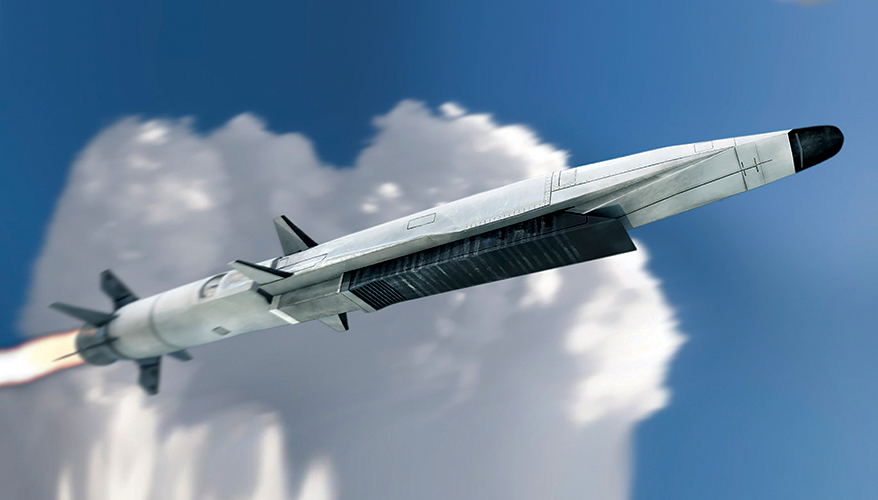USD(R&E) Top 10 Technology Focus Areas
Dr. Mike Griffin, USD(R&E) derived an effective top-10 list of technology focus areas from the 2018 National Defense Strategy that the Defense Department must have to ensure its advantage over potential adversaries. Dr. Griffin has identified these technology areas as:
 hypersonics
hypersonics- directed energy
- command, control and communications
- space offense and defense
- cybersecurity
- artificial intelligence/machine learning
- missile defense
- quantum science and computing
- microelectronics
- autonomy*
Dr. Griffin will likely recommend increased funding across these priority areas between FY20-24 in an effort to produce game-changing capabilities within a decade. Source: Inside Defense, 16 May 18
On 20 Apr 18, Dr. Griffin tasked a Defense Science Board (DSB) task force on Technology Strategy to provide timely recommendations (NLT 1 Jul 18) to the DoD on a technology strategy for each of the 10 priority technology domains. The DSB will recommend objectives for each area, the value to national defense, how achievable the technology is, what should be done most urgently, and estimate the broad timeline and investment needed to achieve the desired technical capability.
* updated per R&E’s latest direction
DARPA SBIR/STTR BAA
DARPA released a SBIR/STTR Broad Agency Announcement on 1 Mar 19 to solicit ideas from innovative small businesses in 10 DoD technology focus areas:
- Artificial Intelligence: Improve algorithms, address data quality, optimize human machine coordination and disrupt adversaries’ efforts.
- Autonomy: Address teaming of autonomous systems; machine perception, reasoning and intelligence; human and autonomy systems trust and interaction.
- Communications: Addressing high-performance, low power embedded processing and developing algorithms for self-configuring, self-healing and resource allocation.
- Cyber: Address behavioral issues, develop self-securing networks and develop methodologies to assess cyber effects and consequences.
- Directed Energy: Address power scaling, jitter reduction, laser size and weight, adaptive optics, beam propagation and target tracking.
- Hypersonics: Address high temperature materials, hypersonic vehicle manufacturing, air breathing propulsion and hypersonic guidance and control systems.
- Microelectronics: Develop economically competitive domestic manufacturing capabilities, improve radiation hardening and develop radio frequency (RF) technologies for specialty applications with nuclear, space and electronic warfare capabilities.
- Quantum Sciences: Address quantum clocks and sensors, quantum communications technologies and develop enabling technologies for quantum computing in the areas of cryogenics and photon detection.
- Space: Developing low earth orbit nano-satellites for missile warning, intelligence, surveillance, reconnaissance, navigation and communications.
- Nuclear Modernization: Modernization of the nuclear triad; bombers, intercontinental ballistic missiles, and ballistic missile submarines, as well as the supporting infrastructure, including the national laboratories and the nuclear command, control, and communications (NC3) network.
USD(R&E) Modernization Priorities
USD(R&E)’s new website outlines their Modernization Priorities
- Artificial Intelligence/Machine Learning – The DoD will leverage
 AI to enable U.S. forces to operate more effectively and efficiently. As a Department, we are evaluating which of our processes and procedures can be enabled via adoption of AI technology to meet warfighter needs and Defense priorities.
AI to enable U.S. forces to operate more effectively and efficiently. As a Department, we are evaluating which of our processes and procedures can be enabled via adoption of AI technology to meet warfighter needs and Defense priorities. - Biotechnology is any technological application that harnesses cellular and biomolecular processes. Most current biotech research focuses on agent detection, vaccines, and treatment. Future advances in biotechnology will improve the protection of both the general public and military personnel from biological agents, among numerous other potential applications.
- Autonomy extends and complements human capabilities. Advantages include persistence, size, speed, maneuverability, and reduced risk to human life. The DoD targets seamless integration of diverse unmanned/mixed team capabilities that provide flexible options for the Joint Force.
- Cyber is a unique operational domain with significant security challenges and potential leap-ahead capabilities for military operations requiring enhanced command, control and situational awareness, and autonomous operations. Ability to gain and maintain the U.S. technological edge in cyberspace in the face of rapid evolution is essential to maintaining mission readiness.
- Directed energy matures to a deployable capability, our armed forces will have the potential to defend against several types of threats with great precision and minimal collateral damage, at minimal cost per engagement. High Energy Laser (HEL) technology development and advancements in hardware are making laser weapon systems increasingly viable.
- FNC3 – Command, Control, and Communications technology encompasses the capability to acquire, process, and disseminate information across force elements. DoD requires a clear path to robust C4I with multiply redundant fully-networked “Comms.” Existing capabilities require sufficient protection against an increasing threat, in pervasiveness and effectiveness.
- Microelectronics have been rapidly evolving as the demand for inexpensive and lightweight equipment has increased, and have been incorporated into countless DoD systems. Our modernization ability is jeopardized by foreign microelectronics (ME) production, actions, and investments. We must develop and deliver next generation microelectronic technologies to enhance lethality, ensure critical infrastructure, and achieve economic competitiveness.
- Quantum computers pose an impending threat to secure communications. Continued US dominance in quantum information science will keep us ahead of these risks, and NSA crypto-modernization will protect our most sensitive communications against a quantum computer attack. Quantum sensing will deliver new and assured precision position, navigation, and timing capabilities, keeping our forces safe in GPS-denied theaters. Quantum networks will deliver drastically enhanced sensors for finding and fixing elusive targets, and will deliver resource multiplying effects for commercially developed quantum computers to solve DoD’s hardest analytical problems.
- Hypersonic weapons travel five or more times the speed of sound. There is a focus on the tactical capability that these sorts of weapons bring to theater conflicts or regional conflicts. Very quick response, high speed, highly maneuverable, difficult to find and track and kill. We are modernizing our offensive and defensive force structure to both utilize and deter this capability.
- Space – The U.S. way of war, across all domains, is dependent on timely and assured space effects. Adversary capabilities and advancements require us to move quickly to a more defendable and resilient space posture. Added protection and resiliency to our current spacecraft fleet is essential.
